Traditionalist Issues
 |
 |
 |
 |
 |
 |
 |
Dialogue Mass - X
Pius XII Empowered Progressivists
for the Liturgical Reform
By the time Pius XII was elected Pope in 1939, neo-Modernism or Progressivism had already begun to re-establish itself in the Church with the rise of the “New Theology” and to make itself manifest in the liturgy – the place where the ordinary Catholic comes regularly in touch with the Faith.
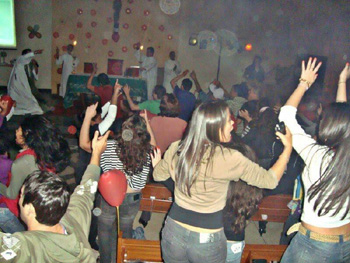 We have seen how the slogan “active participation” has become the motto for liturgical reform and acted as a catalyst to change the face of Catholic worship. But the real revolt was not superficial: It was aimed at changing the fundamentals of the Faith itself, especially the doctrine of the Eucharist and the priesthood.
We have seen how the slogan “active participation” has become the motto for liturgical reform and acted as a catalyst to change the face of Catholic worship. But the real revolt was not superficial: It was aimed at changing the fundamentals of the Faith itself, especially the doctrine of the Eucharist and the priesthood.
“Active participation” also raises deeper questions.
The new concept of the Church as that ‘of the people’
Pope Pius X had taught that the singing of the liturgy was a function of the sacerdotal office, i.e., a prerogative of the ordained ministers of the altar and the choir of Levites. Pius XI, on the contrary, presented it as the right and duty of all the baptized, whether clerical or lay.
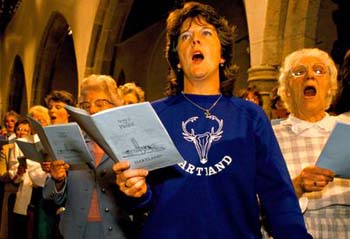 In these two approaches – the former strictly clerical, the latter open and “democratic” – we find an echo of the types of liturgies characteristic of two opposing religions: Catholicism and Protestantism. One cannot help drawing the inference that such a revolutionary move on the part of Pius XI echoes the doctrinal conflicts of the two religions as well.
In these two approaches – the former strictly clerical, the latter open and “democratic” – we find an echo of the types of liturgies characteristic of two opposing religions: Catholicism and Protestantism. One cannot help drawing the inference that such a revolutionary move on the part of Pius XI echoes the doctrinal conflicts of the two religions as well.
As the 16th-century Protestant reformers rejected the Catholic priesthood, their congregational singing was among the most efficient agencies in carrying this principle to the minds of the people. It can be regarded as the liturgical expression of principles common to Protestantism and embodied in Lutheranism and Calvinism alike.
One wonders, therefore, what place such a practice might be thought to have in a Catholic liturgy codified by order of the Council of Trent, until the realization dawns that congregational singing was the sine qua non demand of the Liturgical Movement initiated by Lambert Beauduin for the purposes of promoting Ecumenism.
Pius XII: a vacillating Pope
Pius XII tried to solve the problem by taking both sides of the dispute.
In keeping with this dual vision, the liturgy became the battleground where these two antagonistic forces confronted each other and fought for hegemony in the Church.
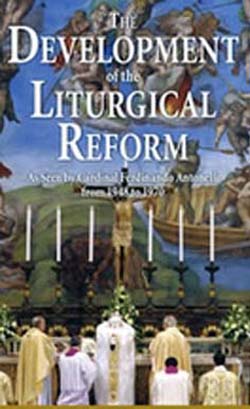 Whether this duality was a product of the Pope’s mind or whether it reflected the pressures he was under from the massive, co-ordinated actions of the Liturgical Movement, we do not know. But because of his vacillation and refusal to fly the Catholic flag in a recognizable manner, he left himself open to the suspicion that he may have been attracted by the “adaptations” which he pretended to censure. While recognizing that the Liturgical Movement could produce harmful effects, he, nevertheless, gave it his blessing and stated his desire to assist it forward. (5)
Whether this duality was a product of the Pope’s mind or whether it reflected the pressures he was under from the massive, co-ordinated actions of the Liturgical Movement, we do not know. But because of his vacillation and refusal to fly the Catholic flag in a recognizable manner, he left himself open to the suspicion that he may have been attracted by the “adaptations” which he pretended to censure. While recognizing that the Liturgical Movement could produce harmful effects, he, nevertheless, gave it his blessing and stated his desire to assist it forward. (5)
But perhaps the greatest boost he gave to the progressivist reformers was his recognition of their efforts as a “movement” within the Church (Mediator Dei § 4). Bugnini saw this as a major strategic coup:
“In his Encyclical Mediator Dei of November 11 [sic], 1947, Pius XII put the seal of his supreme authority on this movement, which by now was to be found everywhere in the Church.” (6)
In this sense, the encyclical can be said to have applied not so much the bridle as a rather sharp spur to the Liturgical Movement in the lead up to Vatican II.
But what clinches the Pope’s willing complicity in the Liturgical Movement is the fact that a year earlier than Mediator Dei, in 1946, he had already set in motion plans for a select group (7) of liturgical specialists to institute a general reform of the liturgy. (8)
The rise of a bureaucratic team to ‘manufacture’ liturgical renewal
Pope Pius XII, having first surrounded himself with a "Praetorian Guard" (9) of scholars and experts, established the Pontifical Commission for the General Reform of the Liturgy in 1948 and stacked it with a majority of progressivists. These included:
The fundamental contradiction inherent in his policy is that Mediator Dei was hijacked within a few years by the type of progressivist reformers he seemed to think he was opposing.
Continued


A reform that changed the face of Catholic worship...
“Active participation” also raises deeper questions.
- How have the faithful slid so quiescently into a non-traditional way of worshipping?
- How has it been so easy for the reformers to change the way Catholics have been participating in the Mass for centuries?
- How have they been allowed to alter the fundamentals of the Faith as expressed in the Tridentine liturgy?
The new concept of the Church as that ‘of the people’
Pope Pius X had taught that the singing of the liturgy was a function of the sacerdotal office, i.e., a prerogative of the ordained ministers of the altar and the choir of Levites. Pius XI, on the contrary, presented it as the right and duty of all the baptized, whether clerical or lay.

Catholics today, above, followed the Protestants with congregational singing
As the 16th-century Protestant reformers rejected the Catholic priesthood, their congregational singing was among the most efficient agencies in carrying this principle to the minds of the people. It can be regarded as the liturgical expression of principles common to Protestantism and embodied in Lutheranism and Calvinism alike.
One wonders, therefore, what place such a practice might be thought to have in a Catholic liturgy codified by order of the Council of Trent, until the realization dawns that congregational singing was the sine qua non demand of the Liturgical Movement initiated by Lambert Beauduin for the purposes of promoting Ecumenism.
Pius XII: a vacillating Pope
Pius XII tried to solve the problem by taking both sides of the dispute.
- He prophesied about the “suicide of altering the Faith in the Church’s liturgy,” (1) but appointed Bugnini as its gravedigger when he fatally made him Secretary of the Commission for Liturgical Reform in 1948. (2)
- He condemned the abuses of the Liturgical Movement in Mediator Dei in 1947, but by 1956, having allowed the same (and worse) abuses to metastasize throughout the Church, he declared that “the liturgical movement has appeared as a sign of God’s providential dispositions for the present day, as a movement of the Holy Spirit in His Church.” (3)
- He upheld the necessity of Latin in the liturgy in Mediator Dei, but the authorized use of the vernacular increased considerably during his pontificate in many countries.
- He taught that interior participation in the liturgy is of primary importance, but placed emphasis on the “activity” of the laity as the best means to achieve participation.
- He showed sensitivity to the faithful who preferred to pray silently at Mass, but indicated that their preference was not worthy of respect by promoting the “Dialogue Mass” for the whole congregation. (4)
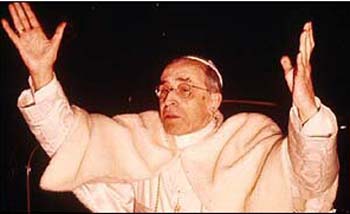
A supposedly conservative Pius XII appointed Fr. Bugnini head of the liturgical reform commission
In keeping with this dual vision, the liturgy became the battleground where these two antagonistic forces confronted each other and fought for hegemony in the Church.

A chronicle of the Liturgical Reform by Card. Antonelli from 1948 to 1970
But perhaps the greatest boost he gave to the progressivist reformers was his recognition of their efforts as a “movement” within the Church (Mediator Dei § 4). Bugnini saw this as a major strategic coup:
“In his Encyclical Mediator Dei of November 11 [sic], 1947, Pius XII put the seal of his supreme authority on this movement, which by now was to be found everywhere in the Church.” (6)
In this sense, the encyclical can be said to have applied not so much the bridle as a rather sharp spur to the Liturgical Movement in the lead up to Vatican II.
But what clinches the Pope’s willing complicity in the Liturgical Movement is the fact that a year earlier than Mediator Dei, in 1946, he had already set in motion plans for a select group (7) of liturgical specialists to institute a general reform of the liturgy. (8)
The rise of a bureaucratic team to ‘manufacture’ liturgical renewal
Pope Pius XII, having first surrounded himself with a "Praetorian Guard" (9) of scholars and experts, established the Pontifical Commission for the General Reform of the Liturgy in 1948 and stacked it with a majority of progressivists. These included:
- Card. Clemente Micara – an ongoing protector since 1946 of serial predator Fr. Marcial Maciel – as President;
- Fr. (later Archbishop) Bugnini – the future destroyer of the Roman Rite – as Secretary;
- Fr. (later Cardinal) Giuseppe Antonelli – co-responsible with Bugnini for producing the Novus Ordo – as General Director;
- Fr. (later Cardinal) Bea, Pius XII’s confessor, who had helped draft Mediator Dei and would play a major role in Ecumenism at Vatican II;
- Mgr. (later Cardinal) Dante, Papal Master of Ceremonies from 1947-1967;
- Fr. Joseph Löw who would work with Fr. Antonelli to change the Easter Vigil in 1951 and Holy Week ceremonies in 1955;
- Fr. Carlo Braga who collaborated closely with Bugnini and became Secretary of the Consilium under Paul VI.
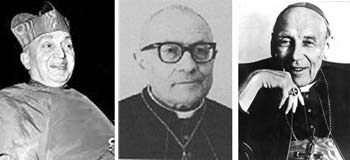
Part of the new team: Micara, Antonelli & Bea
The fundamental contradiction inherent in his policy is that Mediator Dei was hijacked within a few years by the type of progressivist reformers he seemed to think he was opposing.
Continued
- Mgr. George Roche, Pie XII Devant l’Historire, Editions Robert Laffont, Paris, 1972, p. 52.
- Then, still in the reign of Pius XII, he was appointed Consultant to the Sacred Congregation of Rites (1956) and to Professor of Sacred Liturgy in the Lateran University (1957).
- Address of Pope Pius XII to the International Congress on Pastoral Liturgy held at Assisi, September 22, 1956. See Acta Apostolici Sedis, October 29, 1956, p. 712, and L'Osservatore Romano, September 24, 1956.
- He urged that “the whole congregation, in accordance with the rules of the liturgy, either answer the priest in an orderly and fitting manner, or sing hymns suitable to the different parts of the Mass, or do both.” (Mediator Dei § 105).
- Address of Pope Pius XII given to the International Congress on Pastoral Liturgy at Assisi in 1956.
- A. Bugnini, The Reform of the Liturgy (1948-75), Collegeville, Liturgical Press, p. 6.
- Fr Bugnini, at that time a rising star in the Liturgical Movement, correctly claimed that the liturgical reform under Pius XII was “a fruit produced by the thought and prayer of elite minds and then gradually shared with ever widening circles of the faithful.”
- A. Bugnini, op. cit., p. 7 (footnote 5): “In an audience granted to Cardinal Carlo Salotti, Prefect of the Sacred Congregation of Rites, on May 10, 1946, Pope Pius XII expressed his wish that a start be made on studying the problem of a general reform of the liturgy. In another audience, granted to Archbishop Alfonso Carinci, Secretary of the same Congregation, on July 17, 1946, it was determined ‘that a special commission of experts should reflect on the general reform of the liturgy and offer concrete proposals.’”
- The Praetorian Guard was an elite corps of soldiers chosen from among the most experienced and trustworthy troops to act as the Roman Emperor’s bodyguard.

Posted August 4, 2014
______________________
______________________
 Volume I |
 Volume II |
 Volume III |
 Volume IV |
 Volume V |
 Volume VI |
 Volume VII |
 Volume VIII |
 Volume IX |
 Volume X |
 Volume XI |
 Special Edition |


